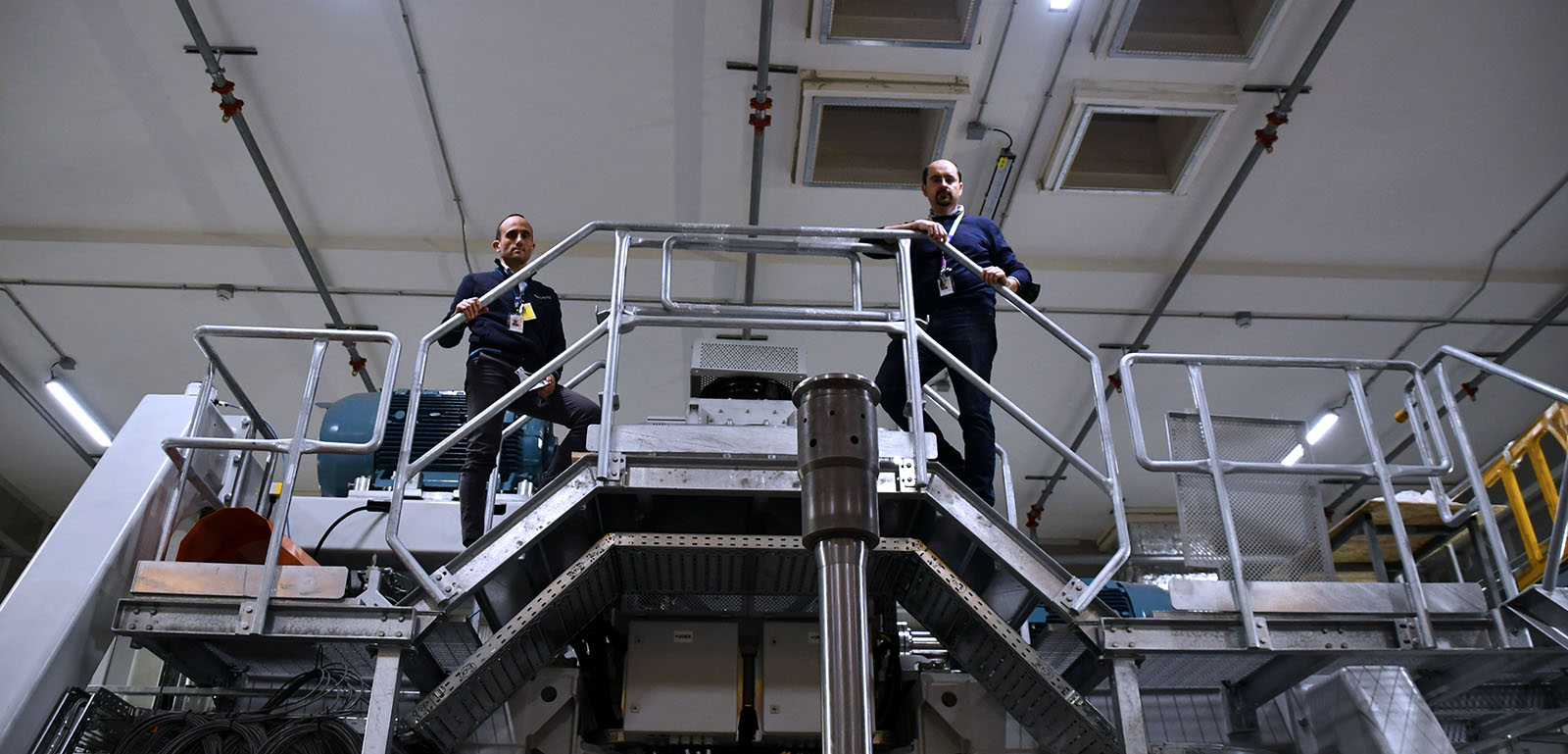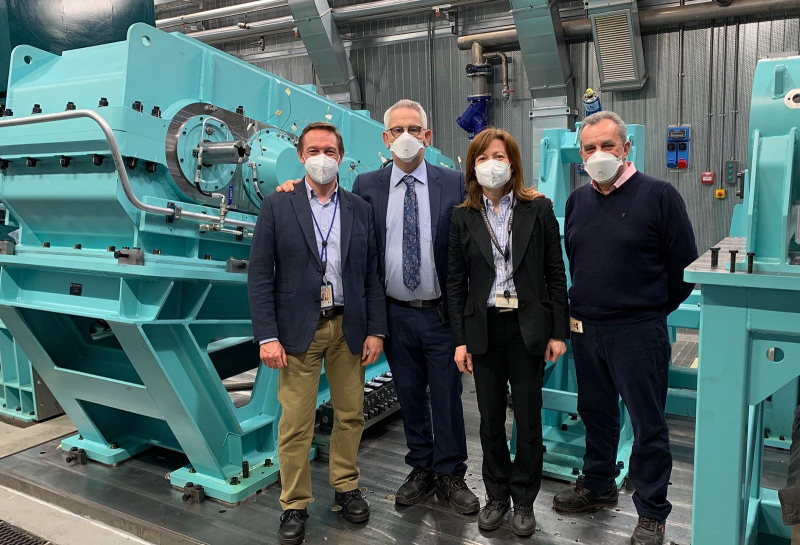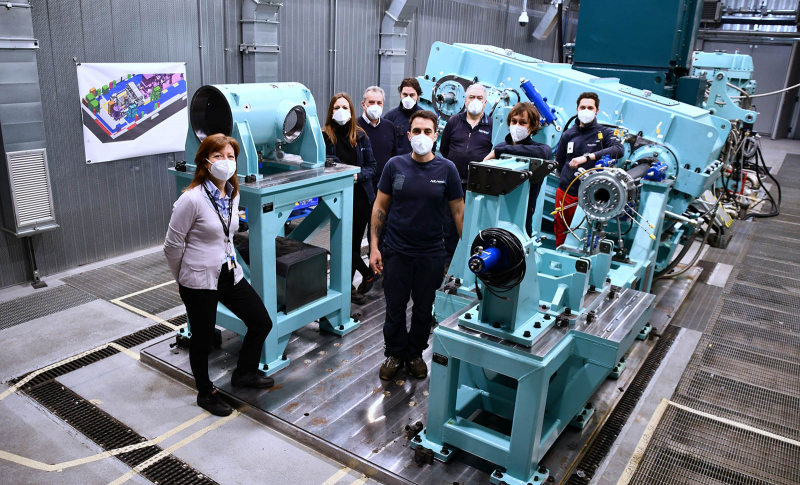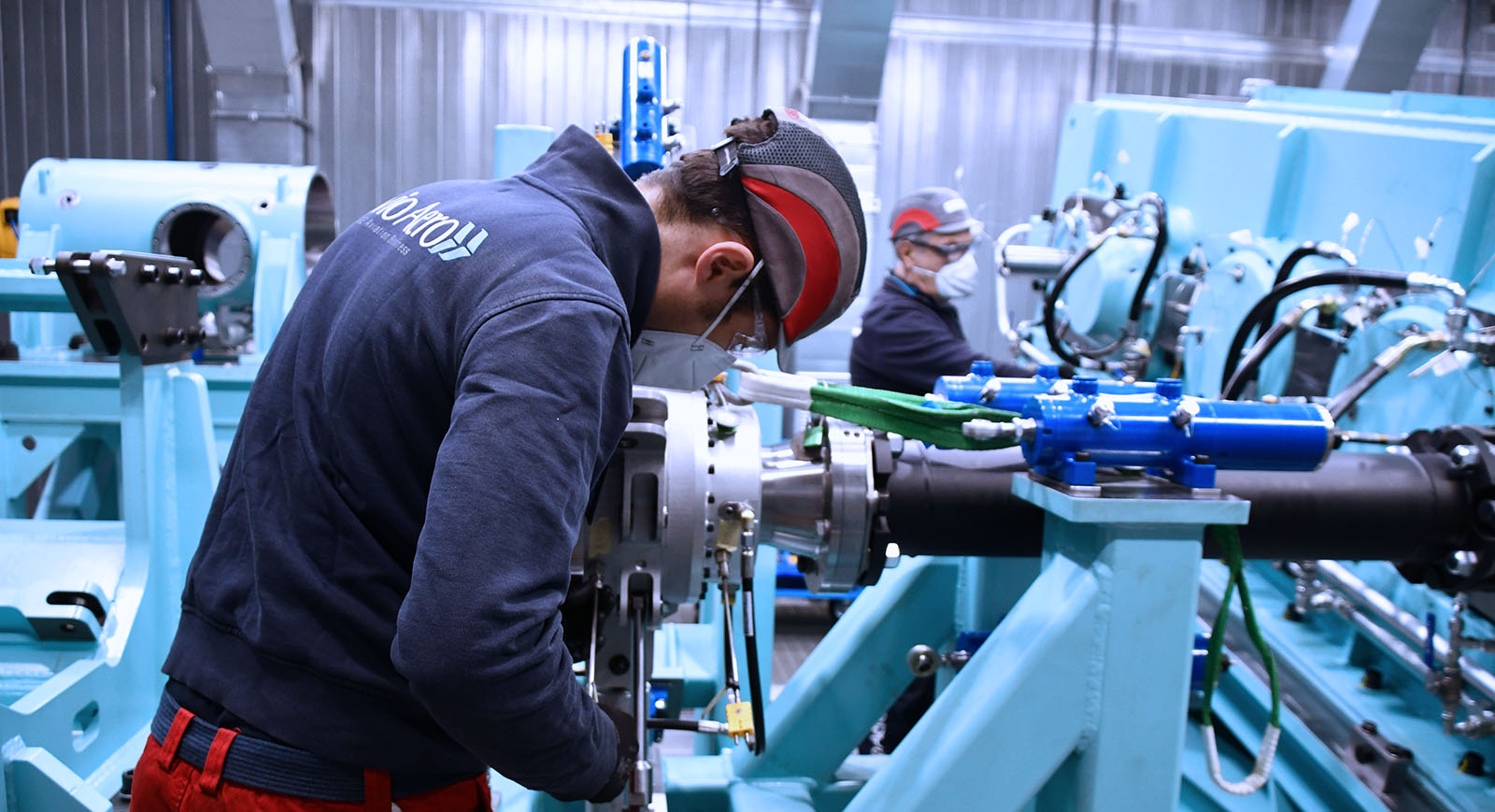Invent
An Ecosystem for Helicopters
Avio Aero has rethought not only helicopter products, but the entire process and everything that revolves around them, offering safe and innovative solutions for futuristic helicopters.
Mar 2021
Over the last decade, concepts of helicopter applications (including VTOL, Vertical Take Off and Landing) has been affected by an in-depth reflection focused on safety above everything else. It is one aspect that has always been core to aeronautics and that - given the increasing number of both civil and military helicopter applications - is closely linked to performance, sustainability and the very configuration of the helicopter (namely, its evolutions of hybrid-electric architectures, diffused propulsion configurations or even combined with the shape of airplanes).
Something similar is taking place in other transportation sectors that, driven by the need for change related to individual and community needs, are focusing on new solutions for mobility, automation and, above all, technological transition. “Typically, a transforming market offers opportunities,” comments Alberto Squillante, Helicopter NPI Program Director at Avio Aero. “New players emerge, more agile than the traditional ones, looking for operational and technological models to address contemporary challenges while still needing technologies and experience that are held by bigger players. The latter, like the market itself, have not yet chosen the dominant technologies and therefore flexibility becomes fundamental, in the production process and in design, to ride the change.”
In the wake of this trend, for a few years now, Avio Aero has embarked on a similar reflection, rooted in its decades of experience in helicopter transmissions (which dates back to the 1960s) and adding skills and expertise gained while working on highly complex power transmissions (like those of the TP400 for the Airbus A400M) and complete propulsion systems for aircraft.
Since 2016, Avio Aero has been involved in the development of a futuristic high-tech helicopter demonstrator by offering Airbus Helicopters its contribution on the RACER and, more recently, has been selected for a new light civil helicopter equipped with an innovative contra-rotating architecture, the VRT 500. It was at that point that the Italian engineers became even more aware of how much the definition of the system went beyond the mere mechanical transmission. How it represents the nerve center of a helicopter, integrated with central elements such as engine and rotor: a whole complex transmission system in which the main elements are interdependent.
"When we talk about the Rotor Drive System, we have to think about a system that goes far beyond the complexity of the main transmission alone (Main Gearbox or MGB)," explains Alessandro Bordoni, Head of Helicopter Systems Engineering at Avio Aero. “In itself, the MGB is challenging due to the number of critical gears and the various reduction stages it has and that the transfer motion from the engine to the rotors efficiently. As an example, for a large helicopter, the MGB has to reduce the engine speed about 100 times and the input speeds can reach 25,000 rpm. Indeed, while central and complex, the MGB is only one part of the Rotor Drive System which includes all the elements needed to transfer power from the engines to the rotors: from the lubrication and cooling system including the heat exchangers, to the fans, sensors, electrical accessories, mechanical brakes, passing through other transmissions for the secondary rotors and their connecting shafts..."
According to Bordoni, the mechanical complexity of the Rotor Drive System of a large helicopter is not that different than that of an aircraft engine. “Naturally, the system is integrated with the rotor and engine. The operations and performance of a helicopter depend strongly on the reliability of this integration. In this sense, our skills and expertise in the engine field (in applications that differ in type, size, volume and engine architecture) have served to accumulate significant and heterogeneous experience. Therefore, we offer helicopter makers a unique product made through distinctive processes."
The Rotor Drive System integration with the rotor and the engine is key to the operations and performance of a helicopter as they depend strongly on the reliability of such integration, therefore, we offer helicopter makers a unique product made through distinctive processes
Transmission systems are usually designed and produced by the large helicopter manufacturers, specifically because of their high complexity and level of integration with the aircraft: i.e. the impact of the Rotor Drive System on performance and safety. Aware of how this value is part of its operative mission, in recent years Avio Aero has initiated a consequent internal evolution. Starting from the designers and the factory, it has actively involved all company functions committed to the helicopter customer.
The result is a new framework - sort of a dedicated environment, called the Helo Ecosystem - exclusively made for helicopter transmission systems. It directly integrates Engineering, Quality and Production to raise the quality and safety levels - that is product standards - and extends the effects to all the company's other products.
"This ecosystem benefits from the commercial, procurement and analysis of semi-finished products and materials, digital and IT expertise, in addition to those of engineering, production and quality, because product safety is nothing other than the synchronous result of all processes, from design to production, from suppliers to experimental tests. Safety is intended as a corporate culture, spread over all processes. Suffice it to say that more than 1200 professionals were involved in various ways in this process. Although the Rivalta and Borgaretto sites are those designated for helicopter products, the new framework is applied to all sites and programs for which Avio Aero holds design responsibility," adds Bordoni.
The approach with which the Helo Ecosystem model has been implemented is inspired initially by the Safety Management System spread throughout GE Aviation and in turn descended from the group's mission: Invent the future of flight, lift people up and bring them home safely. Then it was adapted to Avio Aero, to its process, product and customer characteristics, as well as to the awareness that safety is an individual duty (such that it is the object of specific training at every level and in every department in the company).
This ecosystem benefits from the expertise of all our departments, product safety is nothing other than the synchronous result of all processes, from design to production, from suppliers to experimental tests... safety intended as a corporate culture, spread over all processes
In the ecosystem, only Premium Quality Material is accepted. This means raising the quality level of raw materials to new standards, minimizing the risk (albeit very rare) of inclusions, which are defects or impurities in the metals of both semi-finished and finished products. Risk mitigation right from the design stage, called Damage Tolerance and aimed at designing products that are tolerant of any microscopic metallurgical imperfections.
Vocation for safety also means capacity for protection. This is the case of foreign object damage (FOD), which is prevented by GE's highest standard for gearbox cleaning even before assembly. Cleanliness becomes a cultural element since even a micron-sized particle can become a danger. In addition to these standards, there is an external chain of suppliers and subcontractors for critical parts, capable of guaranteeing the fulfilment of stringent requirements in line with the development times of the new helicopter programs.
The model becomes vital in the testing phase, which involves the individual products, and the related analysis and data collection, through sensors and digital tools. "Each transmission requires acceptance tests at full power for which dedicated skills are needed, halfway between those of a mechanical operator and a test technician... For example, for the new VRT500 helicopter we aimed to create an integrated cell for assembly and the PAT (Power Acceptance Test), managing everything in line with the ability to reproduce and simulate aerodynamic loads on the transmission, similar to those of the helicopter aerodynamic maneuvers, at take-off, at cruising speed, passing through the most complex accelerations," explains Rocco Rametta, NPI Industrial Leader for the same program.
"A helicopter can stay in service for up to 50 years," continues Rametta, "which is why, in addition, we have improved the digital traceability of our product data (from the semi-finished part to the finished product) by initiating the development of a process that follows the product over time: from external processing to assembly on the module for the customer, passing through quality management and the technology validation process."
This new ecosystem has already influenced the thinking of professionals at Avio Aero. In fact, it has contributed to raising the awareness of the importance of the permanent link between product and safety, with all the aspects that revolve around it: the production process, design, life cycle, data management, suppliers and materials.
Customers are asking us for speed and innovation," says Squillante. "The message is clear: they want to meet the needs of their end customers just as quickly. Therefore they are looking for industrial partners that can help them capture the market opportunities arising from change, whether it be hybridization that is so popular right now, or the extrapolation towards fully electric helicopters within 20 to 30 years. The transformation is already underway."








